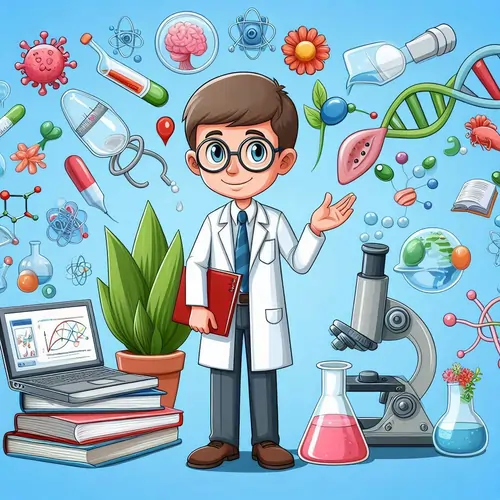Understanding Prokaryotes through their Origins, Structures, Adaptations, and Roles in Ecosystems

When it comes to get help with biology assignment, especially those focused on prokaryotes like bacteria and archaea, it’s crucial to grasp the foundational concepts. University students often encounter questions that require them to understand the intricacies of early life forms, microbial structures, and the role prokaryotes play in our environment. This blog will break down some of these fundamental ideas, helping you to tackle your prokaryotes assignment with confidence.
The Origins of Life: Prokaryotes as Earth's Pioneers
One of the first questions you might encounter in your assignments is about the origins of life. The earliest forms of life on Earth are believed to be prokaryotes, which are simple, single-celled organisms. These life forms, which include bacteria and archaea, thrived in the extreme environments of early Earth. Understanding this concept is vital as it lays the groundwork for comprehending the evolutionary processes that led to the diversity of life we see today.

Prokaryotes are incredibly resilient, with some of the earliest known life forms surviving in extreme conditions. These extremophiles, as they are known, can live in environments with extreme temperatures, acidity, or salinity, which explains why scientists believe the first organisms were likely extremophiles. This understanding can help you answer questions related to the environmental adaptability of early life forms.
Microbial Mats and Cyanobacteria: The Architects of Earth's Atmosphere
Microbial mats are multi-layered sheets of prokaryotes that are often considered the earliest forms of life on Earth. These mats, primarily composed of bacteria and archaea, played a significant role in shaping our planet’s atmosphere. For instance, cyanobacteria, a type of photosynthetic bacteria, were among the first organisms to oxygenate the Earth's atmosphere through the process of photosynthesis.
When tackling assignment questions about oxygenation, it’s important to highlight that cyanobacteria were the first to release oxygen as a byproduct of photosynthesis. This crucial development allowed for the evolution of aerobic organisms and the complex life forms that followed. Understanding the role of microbial mats and cyanobacteria will enable you to answer related questions with clarity and precision.
Prokaryotic Structures: A Focus on Cell Walls and Membranes
Another common topic in prokaryote-related assignments is the structure of prokaryotic cells. Prokaryotes are distinguished by their lack of a membrane-bound nucleus and other organelles, which sets them apart from eukaryotic cells. A key structural feature is their cell wall, which provides shape and protection. The composition of the cell wall differs between Gram-positive and Gram-negative bacteria, which is why prokaryotes stain differently during the Gram-staining process. For cell structure assignments, understanding these differences is essential as it helps in accurately describing prokaryotic cell features and their implications.
For instance, Gram-negative bacteria have an additional outer membrane containing lipopolysaccharides (LPS), which can be a point of discussion in your assignments. Additionally, archaea, another group of prokaryotes, have cell walls made of pseudopeptidoglycan, which is different from the peptidoglycan found in bacterial cell walls. Being familiar with these details will enhance your ability to solve cell assignment questions effectively.
Environmental Adaptations: Halophiles, Thermophiles, and Beyond
Prokaryotes are renowned for their ability to adapt to extreme environments. For example, halophiles thrive in high-salt environments, while thermophiles can survive in extremely hot conditions, such as those found in hydrothermal vents on the ocean floor. These adaptations are key to understanding how prokaryotes occupy a wide range of ecological niches.
In your assignments, you may be asked to describe these adaptations or explain why certain prokaryotes are found in specific environments. Being familiar with terms like halophiles, thermophiles, and acidophiles will help you accurately address such questions.
The Role of Prokaryotes in Ecosystems and Human Health
Prokaryotes play vital roles in various ecosystems, including their involvement in nutrient cycles, such as the nitrogen cycle. For instance, certain prokaryotes perform nitrogen fixation, converting atmospheric nitrogen into forms that plants can use. This process is crucial for sustaining life on Earth, and understanding it is important for answering related assignment questions.
Moreover, prokaryotes are not just found in the environment; they also have significant impacts on human health. While some bacteria are pathogenic, causing diseases, many others are beneficial. For example, gut bacteria play a critical role in digestion and overall health. It’s important to remember this balance when addressing questions about the role of prokaryotes in human health.
Antibiotics and Prokaryotic Resistance: A Growing Concern
One of the most pressing issues in modern microbiology is antibiotic resistance. The imprudent and excessive use of antibiotics has led to the evolution of resistant strains of bacteria, posing a major challenge to public health. Understanding the mechanisms of resistance and the impact of antibiotic misuse is critical for discussing this topic in your assignments.
When writing about this, consider the consequences of antibiotic resistance on both individual health and global health systems. You may also need to discuss how bacteria acquire resistance through genetic mutations or horizontal gene transfer.
Biofilms: The Protective Communities of Prokaryotes
Biofilms are another important topic that often appears in assignments. These are communities of prokaryotes that adhere to surfaces and are surrounded by a protective matrix. Biofilms are significant in both natural environments and medical settings. They can be found on rocks in streams, as well as on medical devices, where they can cause persistent infections.
Understanding biofilms’ structure and function will help you answer questions related to their role in disease and industry. For instance, biofilms are notoriously difficult to eradicate with antibiotics, which is why they are often associated with chronic infections.
Conclusion
Grasping the fundamental concepts of prokaryotes is essential for successfully completing biology assignments at the university level. By understanding the origins, structures, environmental adaptations, and roles of prokaryotes, you’ll be well-equipped to tackle any related questions. Remember, the key to excelling in these assignments is to build a solid foundation in these basics, allowing you to approach more complex topics with confidence.